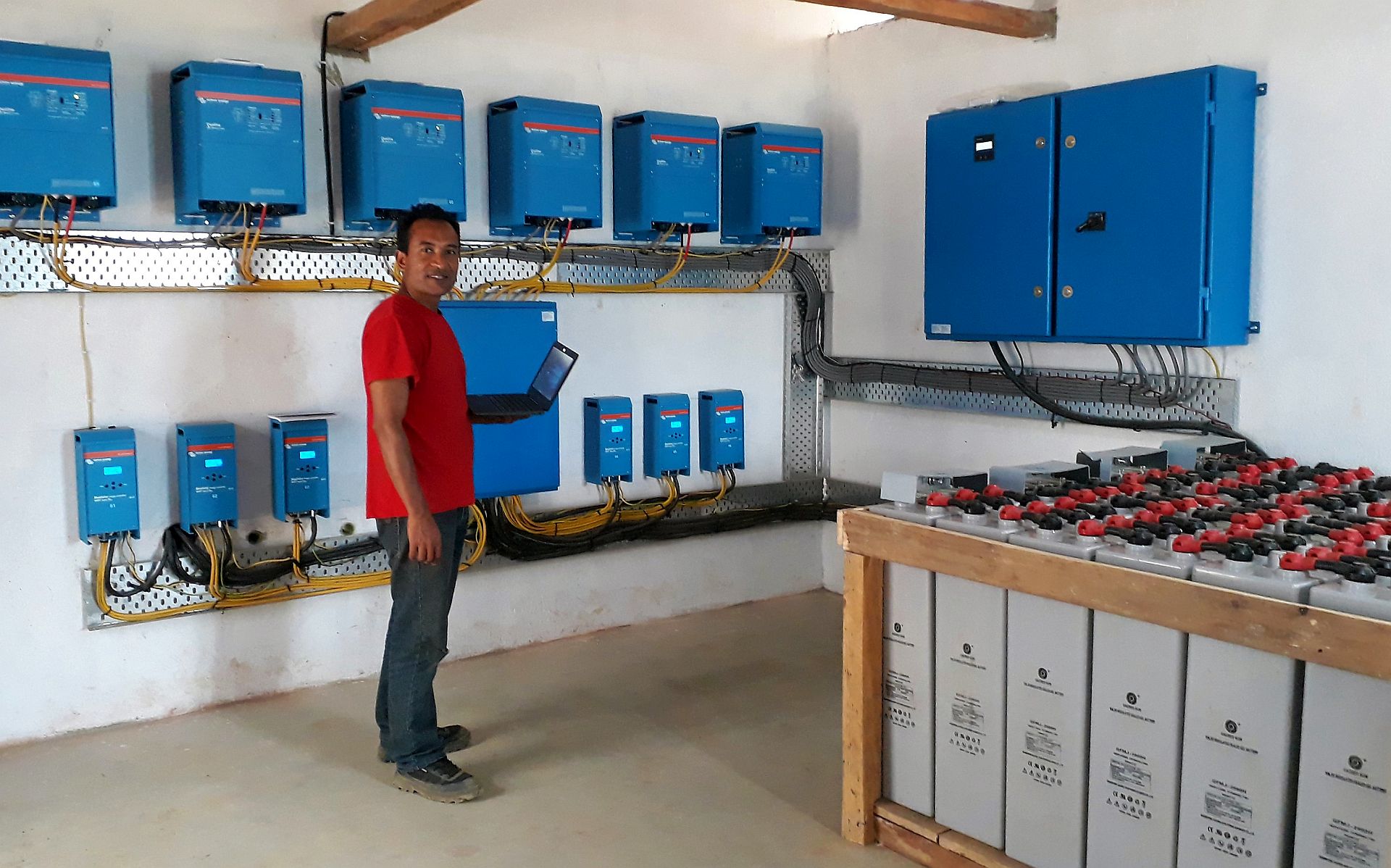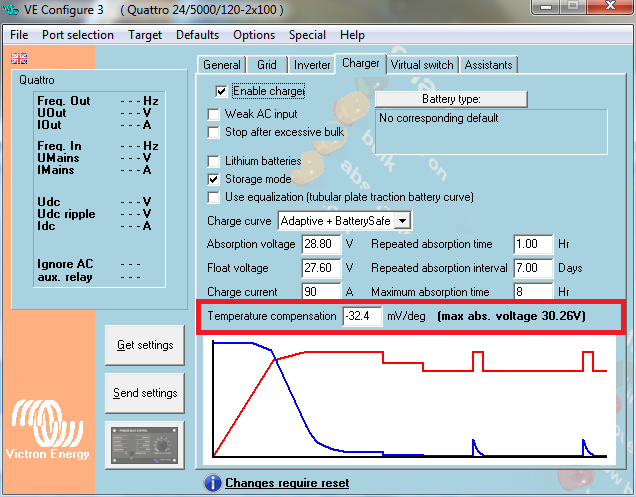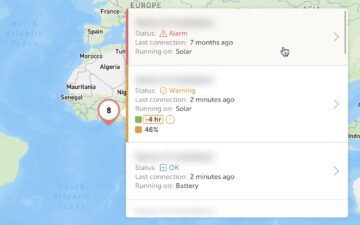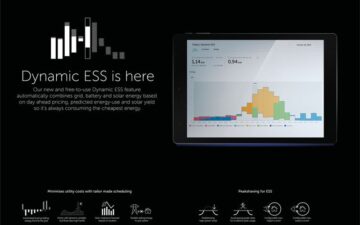
Good morning!
Yes, this is a lot of releases in one post; Venus OS v2.33 is simple: it contains a change necessary for Remote VEConfigure to work properly with the latest version of VE.Bus firmware, version 460. For information on how to update your GX Device to Venus OS v2.33, see their respective update instructions.
Now, let’s discuss the real changes. Last week we released the new version of the VE Configuration tools, and just now VE.Bus firmware 460 was released. Together they bring various welcome features; these are the highlights:
Updated grid codes
- VDE 2018:11 – MultiPlus-II 48/3000 has been certified; certificate is expected on our website within a few days.
- UK G98/1 March 2019, G99/1 May 2018 – MultiPlus-II 48/3000 has been self-certified; certificate on our website.
- Chile
- Romania (based on TOR-D4)
Configurable temperature compensation
The temperature compensation, used for lead batteries, can now be configured. To use this feature, update the inverter/charger to firmware version 460. For more screenshots, see this answer by Mark on Victron Community.
Reduced minimum DC Input low restart voltage
The minimum DC Low Restart has been lowered for 24V models from 21.8 to 20.6, and from 43.6 to 41.2 for 48V models. Unfortunately, we have not been able to reduce this minimum for 12V units, due to hardware limitations.
This change caters for lithium batteries, and especially second-life batteries such as re-used Tesla power packs. It’s not necessary to update the firmware of the inverter/charger to use this change.
VEConfigure now indicates why grid/generator is rejected
With Multi firmwares xxyy460 and up, VEConfig will now indicate why the AC Input is rejected and will also show an indication of the remaining waiting time.
(After the waiting time the unit will connect to grid provided that there is no assistant which prevents the unit from connecting to grid and that the required relay test is performed.)

For those wondering if this extra bit of intelligence will also become visible on a GX Device or VRM, the answer is yes. It’s on the to-do list.
In a multi-phase system, the VE.Bus monitor in VEConfigure will now display for each phase if it is in phase with the mains input. This way it becomes easy to detect a ‘swapped phase’ installation error. Similar to the Phase rotation warning added to Venus OS recently.
Conclusion
That is all for now. There are a few more minor changes, see Victron Professional for those. Note that it is not required, nor advised, to keep our inverter/charger(s) updated to the latest firmware version. Stable systems should be left with their current firmware. Here is when to perform a firmware update:
- During commissioning / first install.
- When troubleshooting.
- To add a new feature that is required by the installation.
And a warning: configuring our inverter/chargers, such as Multis and Quattros, requires both training and experience.
Victron offers no direct support for untrained individuals carrying out configuration.
Have a good day, Matthijs.



















 #victronenergy #adventure
#victronenergy #adventure
 ELECTRICS
ELECTRICS 
